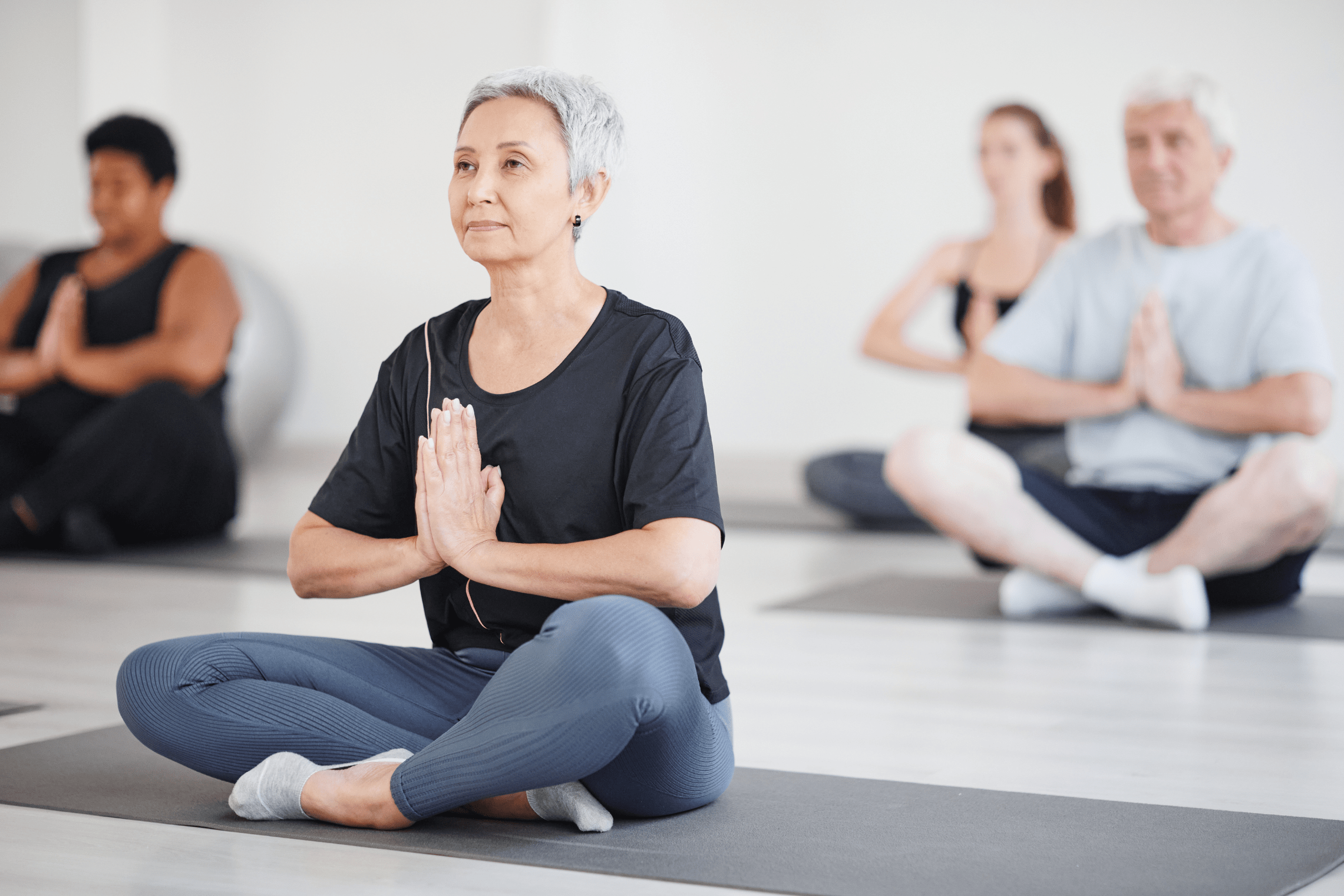Wellness Check
Five Ways to Yoga Your Way to Good Health
Feb 2023 | By Vivienne Singer
If you’ve ever caught yourself thinking, “I’m not flexible enough to practice yoga,” you’re not alone. You are, however, mistaken. If we were supposed to be as flexible as those Yogis we see striking warrior poses while balancing on one tippy toe, few of us would think about ’practicing’ yoga. After all, we’d be great at it.
 The purpose of yoga isn’t to become the shapes that guide us; it’s to use these shapes as tools. These tools encourage us to shift from poor posture to neutral, from neutral to stretch, and from stretch to better flexibility – not better than someone else, but better than our former selves. And the good news is, we can do it any which way we choose: standing up, lying down, on a chair, or even on a surfboard!
The purpose of yoga isn’t to become the shapes that guide us; it’s to use these shapes as tools. These tools encourage us to shift from poor posture to neutral, from neutral to stretch, and from stretch to better flexibility – not better than someone else, but better than our former selves. And the good news is, we can do it any which way we choose: standing up, lying down, on a chair, or even on a surfboard!
To help you decide which types of yoga (if any) are right for you, let’s demystify a few of the more popular styles.
Vinyasa
Vinyasa involves a series of poses that are linked together to create a smooth flow. While this style of yoga is considered to be fairly athletic, you can set your own pace as long as you move dynamically with your breath. In other words, inhale and strike a pose; exhale and strike a pose. And repeat.
Iyengar
Moving at a much slower pace than vinyasa, iyengar encourages you to hold each pose for a relatively long time, focusing on every detail of the posture so that you can hold it safely and deeply. While it’s slower than vinyasa, make no mistake; you can still work up a sweat.
Hatha
Somewhere in between vinyasa and iyengar is hatha yoga. A great option for beginners, hatha is essentially a combination of various styles. The pace is moderate and the focus is on breathwork, as well as proper alignment.
Yin
With yin yoga, you get to let gravity do most of the work while you relax on your mat, holding poses for anywhere from 45 seconds to two minutes. While it’s nice and meditative, rest assured it’s still exercise, and your bones, joints, ligaments, and fascia will thank you.
Restorative
And now … relax. That’s what restorative is all about. Like yin, you spend substantial time in each pose, but the poses are often supported with props like bolsters and blankets to help you settle into deep relaxation.
Keep in mind that you don’t have to stick to only one style of yoga. For example, a hatha class is a great way to start the day, while there’s nothing like a gentle yin practice to get you ready for sleep.
Nor do you have to stick to one teacher. Given the massive shift towards online programming prompted by the pandemic, your virtual options are endless – but don’t rule out in-person sessions if they’re available in your neighbourhood, because nothing beats getting your Zen on with like-minded friends. Namaste!


